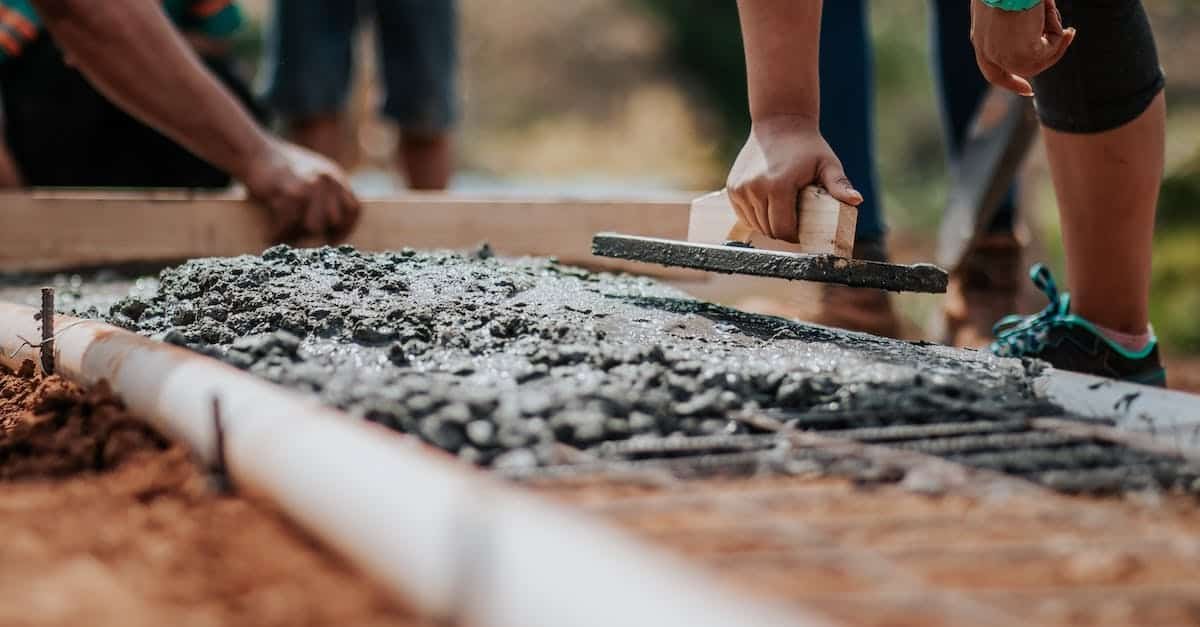Ever found yourself wondering how a simple machine can power a whole host of tools and applications? That’s the magic of an air compressor for you! These devices are the unsung heroes in various industries, from construction to manufacturing.
In this article, you’ll dive into the world of air compressors. You’ll learn what they are, how they work, and why they’re indispensable in so many fields. Get ready to be blown away by the power of compressed air and discover how it energizes everyday tasks!
Whether you’re a DIY enthusiast or just curious about the mechanics behind the scenes, understanding air compressors can be incredibly useful. Stick around as we unpack the essentials and give you a glimpse into the pneumatic force that’s all around you.
What Is an Air Compressor
Imagine you’re in your workshop, surrounded by the familiar scent of sawdust, and you reach for one of the most versatile tools you have. It’s your air compressor, the backbone of pneumatic tools that makes your woodworking projects a breeze. At its core, an air compressor is a device that converts power from an electric motor or gasoline engine into potential energy stored in pressurized air — technically referred to as compressed air.
Here’s how it works: Through one of several methods, the compressor draws in air and reduces its volume. This process increases the air’s pressure, and this high-pressure air is released on command. It’s the same force that you rely on when you’re using your nail gun to swiftly assemble pieces without breaking a sweat. Or when you’re clearing dust off your latest piece with a blast from your air gun, maintaining that pristine finish you’re proud of.
Different types of air compressors cater to a wide variety of needs you might have. They range from small, portable units that are perfect for your garage to massive, fixed systems that could power an entire manufacturing plant. For your woodworking shop, a Portable Piston Compressor might be your go-to, providing enough punch to run your air-powered sanders, drills, and staplers efficiently.
| Compressor Type | Best For |
|---|---|
| Portable Piston | Garage workshops, small-scale projects |
| Rotary Screw | Continuous use, industrial applications |
| Centrifugal | High-capacity, plant-wide operations |
Your commitment to craftsmanship and quality in woodworking mirrors the same level of precision you should expect from your tools. There’s an inherent joy in knowing that the tools you use enhance your skills and bring your visionary projects to life. So next time you fire up your compressor, remember it’s more than just a machine — it’s a vital ally in your creative journey.
How Does an Air Compressor Work
Imagine transforming raw power into something you can harness to fire nail guns, paint, or even sand down your latest masterpiece. That’s exactly what an air compressor does for you in your woodworking shop. An air compressor takes in air at atmospheric pressure and uses either a gas engine or an electric motor to compress and store it in a tank. When you release this high-pressure air in a controlled manner, you’ve got a versatile tool at your disposal.
Here’s the step-by-step on how it all goes down:
- First, the electric motor or gas engine powers a pump mechanism. Think of the pump as the heart of your compressor, relentlessly pushing and squeezing air into the storage tank.
- As the air is forced into the tank, the pressure builds up. It’s the same concept as inflating a tire—pump air in, and the pressure increases.
- The onboard pressure switch keeps an eye on the pressure levels for you. When it hits a pre-set maximum, the switch tells the compressor to take a break, halting the pumping action.
- Then, when you’re ready to use the air, a hose and air tool, like your trusty brad nailer, facilitate the job. As the compressed air is released, the pressure in the tank drops.
- The pressure switch has your back again; once the pressure falls to a certain low point, the compressor kicks back to life, refilling the tank.
It’s a cycle that revolutionizes how you tackle your woodworking projects in your garage workshop. The real magic happens when you hook up one of your air tools to the compressor. Whether you’re spraying finishes or powering a sander, you’re pushing your DIY and woodworking to new heights.
And remember, the size and power of the air compressor you choose should mirror the demands of your projects. More demanding tools require a compressor with more oomph—higher pressure and greater airflow, also known as CFM (Cubic Feet per Minute).
Applications of Air Compressors
If you’re an avid woodworker, you already know that a reliable air compressor is your best mate in the shop. It’s not just about inflating tires or operating a spray gun; the true versatility of air compressors stretches far beyond these common tasks.
For starters, pneumatic tools are the workhorses behind your craftsmanship. Powered by the high-pressure air from your compressor, these tools offer more power and durability than their electric counterparts. They’re lighter—which makes them easier to handle—and you don’t have to worry about electrical cords getting in your way.
Imagine you’re working on a beautiful cedar chest. Your air compressor will power your nail gun, allowing for fast and consistent nailing without the fear of hammer marks. It’s perfect for delicate finishing work where precision is crucial. Here are some tools you might be using with your compressor:
- Nail guns
- Staple guns
- Air ratchets
- Sandblasters
- Air drills
Sandblasting wood is another area where air compressors show their might. Whether you’re prepping surfaces or etching designs, compressed air dispenses the blasting material evenly, giving you a smooth finish or intricate detail with relative ease.
Your woodworking tasks often require a clean, dust-free surface. Using compressed air as a cleaning force, you can blow sawdust and debris off your pieces, ensuring nothing impedes the quality of your finishes or joining techniques.
Let’s not forget about spray painting or staining. With an air compressor hooked to a paint sprayer, you’ll coat surfaces uniformly and much quicker than with a brush or roller. The result? A flawless finish that highlights the natural beauty of the wood.
Your air compressor is your silent partner in everything from constructing to finishing. You rely on it for efficiency and precision, and truth be told, the quality of your woodworking projects flourishes under its sustained support.
Benefits of Using an Air Compressor
You’ll find that incorporating an air compressor into your woodworking shop can bring a world of benefits. Not only does it streamline many processes, but it also enhances the overall quality and efficiency of your work.
Versatility is a key advantage. With one central power source, you can operate a myriad of pneumatic tools. Imagine shifting from a brad nailer to a spray gun without skipping a beat. You’re not just saving time; you’re also cutting down on the physical fatigue that comes with manual tool use.
Safety is another aspect that’s significantly improved. Air tools don’t generate sparks, which is a game-changer in a wood-laden environment like your garage. Plus, these tools are generally lighter, which means you’re less likely to get tired and potentially make dangerous mistakes.
When it comes to precision, nothing beats the consistent performance of air-powered equipment. Whether you’re crafting dovetail joints or applying a smooth lacquer finish, your compressor-backed tools allow for a level of control that’s hard to replicate with their electric or battery-powered counterparts.
Let’s not overlook economical efficiency. Generally, pneumatic tools are less expensive to purchase and maintain compared to their electric or gas-engine versions. They have fewer moving parts, which translates to fewer breakdowns and a longer lifespan. Considering they can also be more powerful, it’s clear you’re getting more bang for your buck.
Beyond the immediate advantages, an air compressor is a long-term investment in your craftsmanship. Over time, you’ll appreciate the capacity to handle larger projects or multiple tasks simultaneously without the need for tool upgrades. Your workshop can evolve with your skills, anchored by this single, powerful tool.
Remember though, as your collection of pneumatic tools grows, the compressor will remain the heart of your operations, pumping life into every project that emerges from your workshop.
Conclusion
You’ve seen just how indispensable an air compressor can be in your woodworking arsenal. It’s all about harnessing the power of compressed air to make your projects smoother and your workflow more efficient. Whether you’re powering through with pneumatic tools or giving your creations that perfect finish with spray painting, your air compressor is the silent partner that elevates your craft. Remember to match the compressor to your needs and you’ll find it’s not just a tool, but a long-term investment that pays off in quality and convenience. Happy woodworking!
Frequently Asked Questions
What is an air compressor?
An air compressor is a device that takes in air at atmospheric pressure and compacts it to store in a tank, using a gas engine or electric motor, which can then be used to power various tools.
How does an air compressor work?
An air compressor works by using a pump to draw in air and compress it into a storage tank. When required, the high-pressure air is released in a controlled manner to power tools.
What are some woodworking applications for air compressors?
Air compressors are commonly used in woodworking to operate pneumatic tools like nail guns and staple guns, as well as for tasks like sandblasting, surface cleaning, and spray painting or staining.
Why use an air compressor in woodworking?
Using an air compressor in woodworking offers versatility, safety, precision, and economic efficiency. It streamlines processes, improves work quality and enables the use of diverse pneumatic tools.
Is an air compressor a good investment for woodworking?
Yes, an air compressor is a valuable long-term investment for woodworking. It can manage larger projects and various tasks simultaneously, removing the need for frequent tool upgrades.




